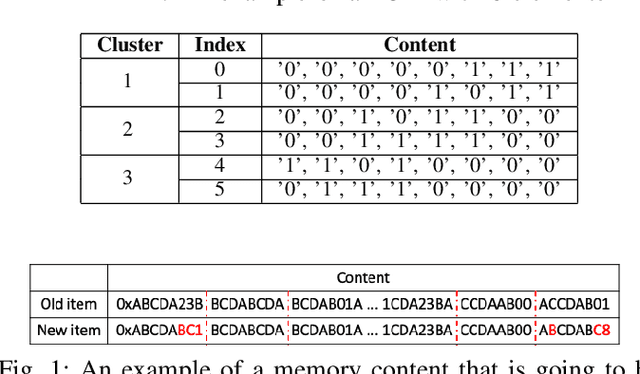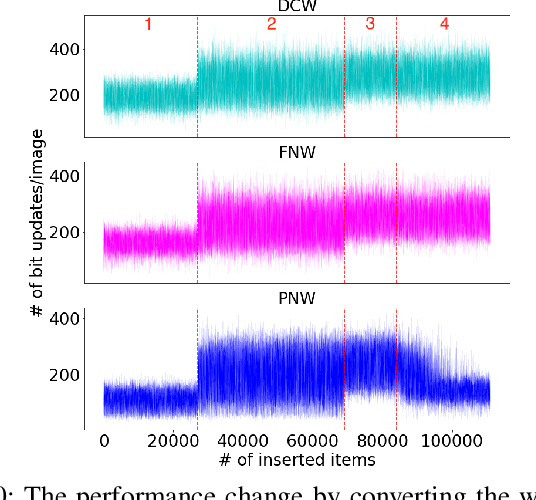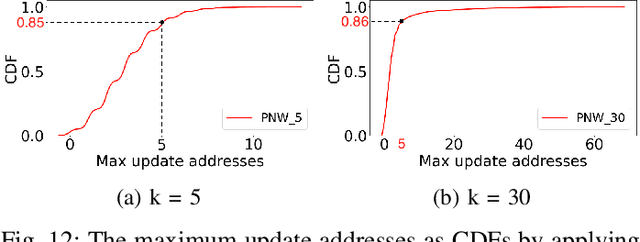Heiner Litz
Predict and Write: Using K-Means Clustering to Extend the Lifetime of NVM Storage
Nov 04, 2020



Abstract:Non-volatile memory (NVM) technologies suffer from limited write endurance. To address this challenge, we propose Predict and Write (PNW), a K/V-store that uses a clustering-based machine learning approach to extend the lifetime of NVMs. PNW decreases the number of bit flips for PUT/UPDATE operations by determining the best memory location an updated value should be written to. PNW leverages the indirection level of K/V-stores to freely choose the target memory location for any given write based on its value. PNW organizes NVM addresses in a dynamic address pool clustered by the similarity of the data values they refer to. We show that, by choosing the right target memory location for a given PUT/UPDATE operation, the number of total bit flips and cache lines can be reduced by up to 85% and 56% over the state of the art.
Learning Memory Access Patterns
Mar 06, 2018



Abstract:The explosion in workload complexity and the recent slow-down in Moore's law scaling call for new approaches towards efficient computing. Researchers are now beginning to use recent advances in machine learning in software optimizations, augmenting or replacing traditional heuristics and data structures. However, the space of machine learning for computer hardware architecture is only lightly explored. In this paper, we demonstrate the potential of deep learning to address the von Neumann bottleneck of memory performance. We focus on the critical problem of learning memory access patterns, with the goal of constructing accurate and efficient memory prefetchers. We relate contemporary prefetching strategies to n-gram models in natural language processing, and show how recurrent neural networks can serve as a drop-in replacement. On a suite of challenging benchmark datasets, we find that neural networks consistently demonstrate superior performance in terms of precision and recall. This work represents the first step towards practical neural-network based prefetching, and opens a wide range of exciting directions for machine learning in computer architecture research.
 Add to Chrome
Add to Chrome Add to Firefox
Add to Firefox Add to Edge
Add to Edge